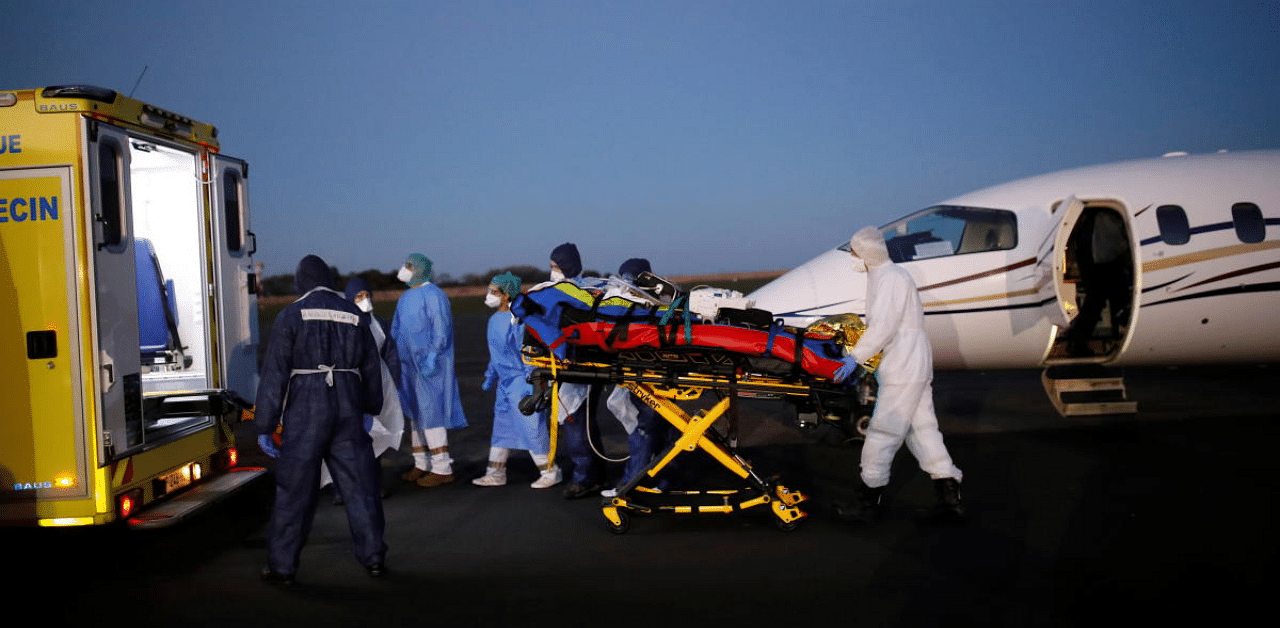
The official end of winter in the Southern Hemisphere has brought a glimmer of hope on the pandemic front. According to the World Health Organization, countries ranging from Chile to Australia to South Africa experienced one of the mildest flu seasons on record. In a typical year, Australia registers anywhere between 80,000 and 250,000 laboratory-confirmed cases; this year, the figure barely inched above 20,000, leading government officials to confirm the “minimal impact on society due to influenza circulation in the 2020 season.”
What might this mean for the United States? The great fear at this point is the eruption of a so-called “twindemic” in which influenza and a second Covid spike appear simultaneously, overwhelming our hospitals, our first responders, and our supply chain of lifesaving protective gear. “I do think the fall and winter of 2020 and 2021 are going to be probably one of the most difficult times we’ve experienced in American public health,” CDC Director Robert Redfield has said, citing this probability, and he’s not alone. This month, Anthony Fauci warned about the “dreaded overlap” of these highly infectious diseases.
Theories abound as to why the Southern Hemisphere escaped the flu season relatively unscathed. It’s possible that a fair number of inhabitants were partly immune to the circulating strains, having encountered them before, or that the strains themselves were less virulent. But the consensus among public health experts is much simpler: the measures put in place to stop Covid in the Southern Hemisphere had a dramatic impact on the suppression of other respiratory diseases. Social distancing, mask wearing, quarantines, border closings, handwashing campaigns, shuttering schools and nonessential businesses—each played a role.
This should come as no surprise. More than a decade ago, a group of medical researchers employed the term “flattening the curve” in studying pandemics—specifically the “Great Influenza” of 1918, which killed an estimated 50 million people worldwide. Focusing on the response of several dozen American cities, they demonstrated that measures designed to isolate and quarantine, from school closings to staggered business hours, proved extremely effective. The death rates from influenza dropped in cities that took these measures seriously, especially when they started them early and kept them in place until the virus burned itself out.
Today, of course, the best firewall against influenza is a vaccine. Reports from the Southern Hemisphere showed a surge in influenza vaccinations this past winter, as people rushed to protect themselves during the Covid-19 pandemic. New Zealand, known for its notoriously low rate of “flu jabs,” saw a record doubling of demand. Will the United States follow suit? Early signs are not encouraging.
Weary of the pandemic, confused by mixed messages and false White House predictions, Americans are deeply divided about the best way to proceed. Sensible precautions have become politically charged issues, with the coming flu season lost in the noise. According to CDC estimates, the U.S. experienced a “moderate” season in 2018–2019, with 35.5 million cases, 16.5 million medical visits, 490,000 hospitalizations and 24,200 deaths. Combined with a Covid virus that shows few signs of receding, these numbers offer a dire portrait of what may lie ahead.
For months now, President Trump has wished away the possibility of a second Covid-19 spike, insisting that the virus would either disappear as the weather warmed or “come back in doses that we can contain.” His own recent illness, during which he received a level of medical care reserved for heads of state, appeared to make him even less mindful of the consequences. Upon leaving the hospital, he further scrambled the truth by claiming that the coronavirus is no more dangerous than seasonal flu, and that neither is serious enough to “dominate” the pace of everyday life. The likelihood of a “twindemic,” such as Redfield and Fauci have warned about, seems beyond his ability to grasp.
While demanding “warp speed” in hopes of rolling out a Covid vaccine before election day, the president has long viewed vaccines with suspicion. He is on record endorsing the thoroughly debunked theory that vaccines cause autism, while also dismissing the need for a flu shot. “I never had the flu,” he said recently. “And I come to the White House, ‘Sir we have to give you a flu shot.’ I said, ‘Why?’ And I took it. I don’t know if I should have. Who knows?”
Certainly, the public health community does. There is now an abundance of flu vaccine in the United States, but a worrisome shortage of Americans determined to be vaccinated. A recent survey by the National Foundation for Infectious Diseases revealed that more than 40 percent of U.S. adults do not intend to get a flu shot during the 2020–2021 season, including many at high risk for flu-related complications, and the young have fared no better. Fully one third of American parents have no plans to get their children a flu shot, while two -thirds believe that having them vaccinated this season, when Covid-19 is circulating, is no more important than in previous years.
The tools for minimizing a “twindemic” are both obvious and available. The Southern Hemisphere just proved that. What is lacking is a coherent federal strategy to alert Americans to the consequences of inaction. Flu season has already begun. The clock is ticking.